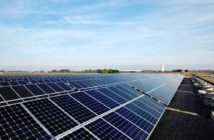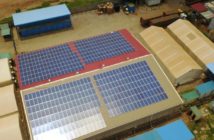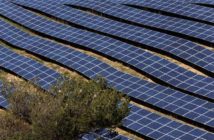Countries from the Middle East and North Africa are getting $660 million to proceed with an updated solar plan for the region.
Under the Clean Investment Fund’s Clean Technology Fund, the M.E.N.A. countries of Algeria, Egypt, Jordan, Libya, Morocco and Tunisia will receive financial support for an extensive plan to create 1,120 megawatts of clean energy from concentrated solar power.
The endowment is expected to leverage around $5 billion from other donors and private financing.
The investment plan, co-implemented by the African Development Bank and the World Bank, was initially endorsed by the C.I.F. in 2009 and was at various stages of execution in selected countries, but it was delayed due to four key factors. These included the Arab Spring and the uncertainties it has brought about for large infrastructure investments in some countries, subsidy requirements in excess of what is considered low-cost by the participating countries, specific project-related setbacks and potential economic difficulties in Europe.
The revised plan realigns projects in the pipeline according to each country’s reassessed needs and uses well-performing projects, such as the Ouarzazate I 160 MW plant in Morocco, as models to develop more projects. In addition, the plan extends its coverage to include concentrated photovoltaic technology and business models like public sector, public-private partnerships and independent power producers.
Originally, the plan estimated a total of 895 MW of C.S.P. capacity. Its updated version now looks to have 1.12 gigawatts of generating capacity, making it the most ambitious C.S.P. program globally. The countries have also agreed to reduce the funding from the original $750 million to $660 million, including currently backed projects.
“The changes suggested by the countries in the plan make it a more viable and flexible plan which takes into account the realities each of these countries face,” said Mafalda Duarte, AfDB coordinator for the Bank’s C.I.F. program.
“We can all look to this revised plan as both a signal of hope for the forward economic and social movement in the region built on renewable energy, and a more realistic blueprint for the evolution of renewables as a potent engine of power globally,” she added.
The updated plan earmarks $218 million for the 300 MW Ouarzazate II in Morocco, $123 million for the 100 MW Kom Ombo in Egypt, $62 million for the 50-100 MW Akarit in Tunisia, and $50 million for up to 100 MW in Jordan.
It will also provide an additional $10 million for technical assistance to complement efforts at the project level and create a platform for knowledge exchange and increase private sector involvement and regional integration.
“We are looking forward to seeing more involvement by this kind of financing in the coming years, and hope it will help continue the dynamism of the solar power sector and its competitiveness with wind and other energy sources, including fossil fuels,” said Mustapha Bakkoury, president of the Moroccan Agency for Solar Energy.
The M.E.N.A. region has vast potential for renewable energy, mostly from solar energy. A recent GTM analysis suggested the annual solar market in M.E.N.A. countries could reach around 3.5 GW by 2015 and account for nearly eight percent of the total demand worldwide by that time.
The world’s largest concentrated solar power plant to date is already located in the M.E.N.A. region (see related story), the 100 MW Shams 1 facility in the United Arab Emirates which was launched just this March. – C. Dominguez






